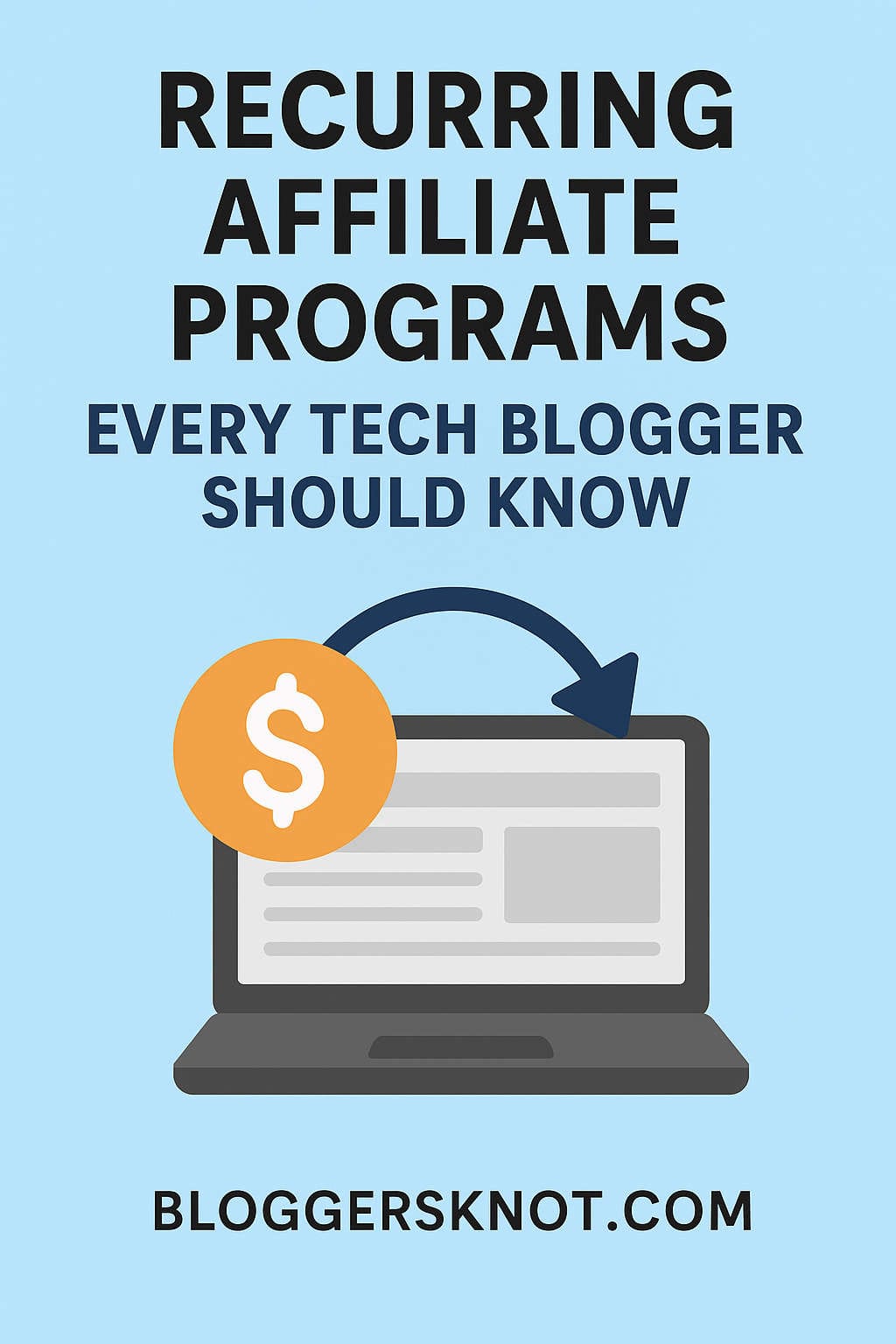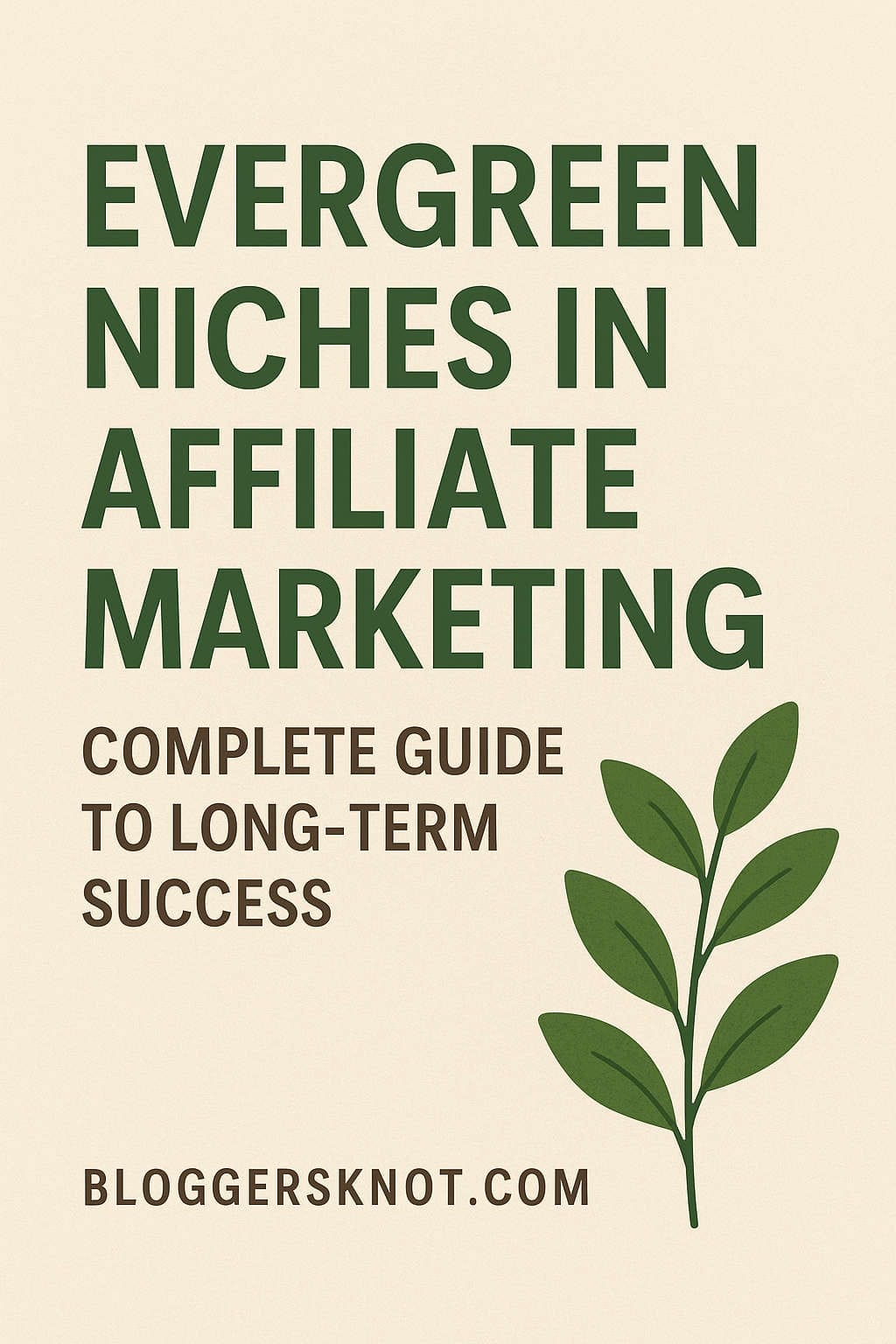Blogging about technology is exciting because the industry never stands still. New platforms, tools, and solutions appear every year, giving tech bloggers endless opportunities to create fresh content. But as every blogger eventually realizes, the challenge isn’t just creating valuable articles—it’s turning those articles into a sustainable income stream.
That’s where affiliate marketing comes in. For years, affiliates have helped bloggers monetize by recommending products and earning commissions when readers make purchases. Yet the problem with most affiliate programs is that they only reward you once. Someone buys a service through your link, you get paid, and then the income ends.
Recurring affiliate programs change the game. They allow you to earn commissions every month—or every year—for as long as the customer you referred stays subscribed. It transforms affiliate marketing from a hustle of chasing one-time sales into a steady stream of passive income.
For tech bloggers, this model is especially powerful. Why? Because the tech products people use—such as web hosting, VPNs, cloud storage, SEO tools, and SaaS platforms—are not one-off purchases. They are services that people rely on every day and often stay subscribed to for years. That means a single recommendation could bring you income again and again without any extra effort.
This article explores everything you need to know about recurring affiliate programs. You’ll learn why they’re so valuable, what to look for before joining one, and which real-world programs are worth promoting. You’ll also discover strategies to promote these programs in a way that builds trust with your readers and strengthens your SEO rankings.
By the end, you’ll be equipped with the knowledge to turn your tech blog into a long-term revenue-generating asset.
Why Recurring Commissions Are a Tech Blogger’s Secret Weapon
If you’ve ever felt the frustration of inconsistent affiliate income, you’re not alone. One month you’re making sales, the next you’re scrambling to find new buyers. It feels like starting from scratch each time. Recurring commissions eliminate that feast-and-famine cycle.
Here’s why they’re so powerful:
1. Compounding Growth Over Time
Recurring commissions stack on top of each other. If you earn $100 in recurring commissions this month and bring in another $100 next month, by the third month you’re earning $300 monthly. Over time, this compounding effect can snowball into thousands of dollars.
2. Evergreen Content Meets Evergreen Revenue
Tech bloggers often publish evergreen content—guides, tutorials, and reviews that stay relevant for years. When paired with recurring affiliate links, one well-written post can generate revenue long after it was published.
3. High Lifetime Value
Even if recurring commissions start smaller than one-time payouts, they usually surpass them in the long run. For example, earning 30% monthly on a $20 subscription may sound modest, but if a customer stays for 24 months, that single referral brings you $144 instead of a one-time $20 payout.
4. Consistency and Predictability
Unlike one-time programs, recurring models provide more predictable income. This consistency allows you to plan better, reinvest into your blog, and scale more confidently.
How to Choose the Right Recurring Affiliate Program
Not all recurring programs are created equal. Choosing wisely can mean the difference between building a reliable income stream and wasting time promoting services that don’t convert. Here’s what to consider:
Commission Structure
Some programs offer lifetime recurring commissions, while others limit payments to a year. Ideally, you want programs that pay for the full lifetime of the customer.
Payout Percentage
Recurring commissions typically range between 10% and 50%. Balance the rate with the product’s price point. A 20% recurring commission on a $100 monthly subscription is more lucrative than 50% on a $5 product.
Customer Retention Rates
The best recurring programs involve products people stick with for the long haul. Services like web hosting, VPNs, and cloud storage are highly “sticky,” meaning customers rarely cancel once they integrate them into their workflows.
Brand Reputation
Your credibility as a blogger is tied to the brands you promote. Always choose programs backed by reliable companies with strong reputations and solid customer support.
Affiliate Support and Resources
Look for programs that provide banners, creatives, performance dashboards, and timely support. The easier they make promotion, the faster you can scale.
Real Recurring Affiliate Programs Tech Bloggers Should Explore
Let’s dive into some of the most popular and effective recurring affiliate programs available today. These programs not only pay consistently but also align perfectly with what tech readers are already searching for.
1. Web Hosting Providers
Why it works: Every website needs hosting. From small blogs to enterprise apps, hosting is the backbone of the internet. Because people rarely switch providers, this makes hosting one of the best recurring affiliate categories.
Examples and Commission Rates:
- Kinsta – Up to $500 upfront plus 10% recurring commissions for as long as the customer stays subscribed.
- Cloudways – Flexible plans offering $30 upfront plus 7% recurring monthly commissions.
- RoseHosting – 50% on the first payment plus 10% recurring commissions.
Content Ideas for Promotion:
- Step-by-step guides on setting up WordPress or other CMS platforms.
- Comparative reviews of hosting services.
- Case studies of site performance improvements.
2. VPN Services
Why it works: Privacy, online security, and unrestricted internet access are major concerns today. VPNs are subscription-based and sticky—customers tend to renew month after month.
Examples and Commission Rates:
- NordVPN – 100% commission on the first month for monthly plans, 40% on annual sign-ups, plus 30% recurring commissions on renewals.
- Surfshark – 40% recurring commissions on every billing cycle.
- ExpressVPN – Tiered commissions with recurring elements for renewals.
Content Ideas for Promotion:
- Guides on bypassing geo-blocks for streaming.
- Articles about securing data on public Wi-Fi.
- Tutorials on setting up VPNs across multiple devices.
3. Cloud Storage and Backup Services
Why it works: Data is the lifeblood of individuals and businesses. Once people start storing files in the cloud, switching services becomes inconvenient. That makes these programs great for long-term recurring income.
Examples and Commission Rates:
- Backblaze – 10% recurring lifetime commission on both personal and business plans.
- pCloud – Lifetime recurring commissions ranging from 20% to 40% depending on plan.
- Sync.com – 20% recurring commissions on all subscriptions.
Content Ideas for Promotion:
- “Why Cloud Backup is Essential for Remote Workers.”
- Tutorials on automating backups for businesses.
- Comparisons of different cloud storage platforms.
4. SEO and Marketing Tools
Why it works: Digital marketing tools are essential for businesses, entrepreneurs, and bloggers. These tools often come with high monthly price tags, making recurring commissions lucrative.
Examples and Commission Rates:
- Semrush – Up to 40% recurring commissions with a generous 120-day cookie window.
- Ahrefs – 20% recurring commissions on subscriptions.
- ActiveCampaign – 20–30% recurring commissions on email automation plans.
Content Ideas for Promotion:
- Tutorials on keyword research using these tools.
- Case studies on how businesses grew with SEO or email automation.
- Resource lists for entrepreneurs and startups.
5. Online Course Platforms
Why it works: The e-learning industry is booming, and creators are looking for platforms to host and sell their courses. These are high-ticket subscriptions, and commissions can be very rewarding.
Examples and Commission Rates:
- Kajabi – 30% recurring commissions, with referrals potentially worth over $1,000.
- Teachable – 30% recurring commissions across their plans.
- Thinkific – 20% recurring commissions with lifetime duration.
Content Ideas for Promotion:
- “How to Launch Your First Online Course in 30 Days.”
- Platform comparisons for creators.
- Case studies of successful course creators.
6. SaaS Tools for Developers and Businesses
Why it works: From project management to CRM to analytics, SaaS tools are essential for modern businesses. Many of them operate on subscription models, ensuring long-term recurring payouts.
Examples and Commission Rates:
- Pipedrive – 33% recurring commissions.
- Thrive Themes – 35% recurring commissions.
- Webinar Platforms (Demio, EasyWebinar, WebinarNinja) – 30–50% recurring commissions depending on tier.
Content Ideas for Promotion:
- Productivity guides for developers.
- Tutorials on using project management tools.
- Business tech stack recommendations.
Building Trust While Promoting Recurring Affiliate Programs
Affiliate marketing thrives on trust. Without it, your recommendations won’t convert and your audience will drift away. Here’s how to keep that trust intact:
- Be Transparent
Always disclose affiliate relationships. Readers respect honesty, and disclosures help you comply with legal requirements. - Show Real Experience
Whenever possible, use the products you promote and share your personal experiences. Screenshots, tutorials, and honest pros and cons make your content authentic. - Value Before Promotion
Put your audience’s needs first. Teach them something new, solve a problem, or simplify a complex process. The affiliate link should feel like a natural, helpful next step. - Update Content Regularly
Tech changes fast. Keep your recommendations fresh with updated screenshots, pricing, and features. Outdated posts erode credibility.
SEO Tips to Maximize Recurring Affiliate Income
Since most affiliate revenue comes through search traffic, optimizing your content for SEO is non-negotiable. Here’s how to do it smartly:
- Target Long-Tail Keywords: Instead of competing for “best VPN,” try “best VPN for streaming in 2025” or “VPN for freelancers.”
- Create Comparison Posts: “X vs Y” posts rank well and help readers make purchasing decisions.
- Use Structured Summaries: Include quick snapshots of commission details or feature comparisons for readability and SEO.
- Build Internal Links: Link affiliate-rich posts to related guides and tutorials to boost site authority.
- Leverage Evergreen Topics: Choose tools and services that will stay relevant long-term to maximize the lifespan of your content.
Scaling Your Recurring Affiliate Revenue
Once you’ve established your first steady stream of recurring income, the next step is scaling:
- Focus on Evergreen Content – Double down on posts that attract consistent traffic.
- Grow an Email List – Nurture subscribers with helpful content and subtle affiliate promotions.
- Experiment with Funnels – Offer free resources like eBooks or templates that lead into affiliate recommendations.
- Diversify Programs – Don’t rely on just one affiliate. Promote complementary products (e.g., hosting + backup + monitoring).
- Track and Optimize – Use analytics to identify top-converting posts and refine your strategies.
Conclusion: The Long-Term Potential of Recurring Affiliate Programs
Recurring affiliate programs are one of the smartest income strategies for tech bloggers. They transform your content from a one-time revenue generator into a long-term asset that pays you month after month. By promoting products your readers truly need—like hosting services, VPNs, cloud storage, SEO tools, and SaaS platforms—you’re aligning with real value.
The key is authenticity. Be transparent, provide value-first content, and recommend tools you genuinely believe in. Pair this with strong SEO practices and evergreen strategies, and you’ll build a blog that doesn’t just make money today, but continues generating reliable income for years to come.
For tech bloggers who want to escape the trap of chasing one-off sales, recurring affiliate programs aren’t just an option—they’re the future.






